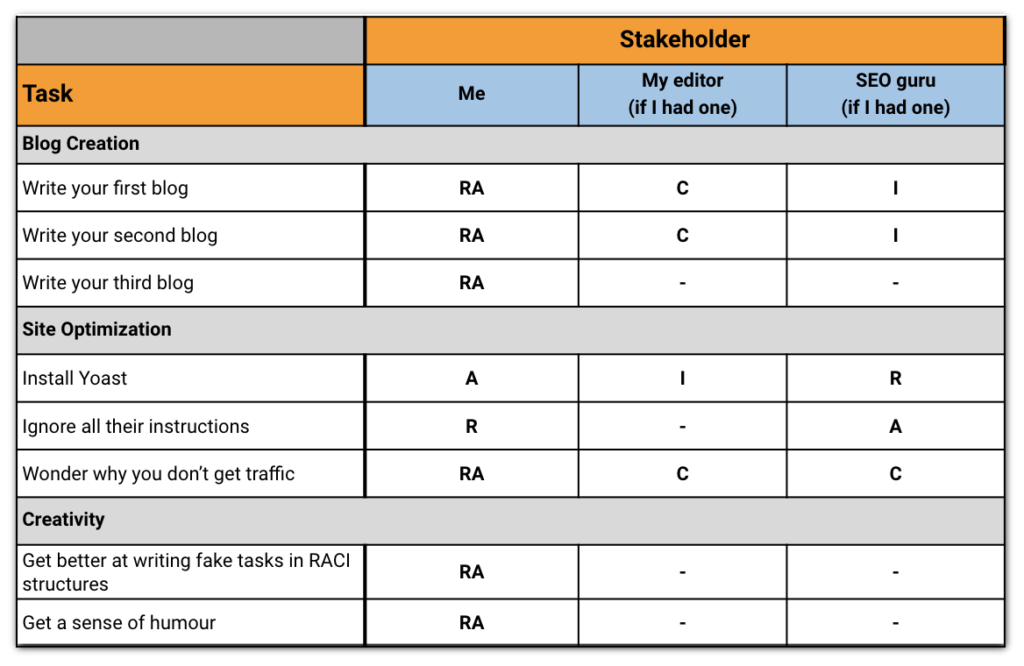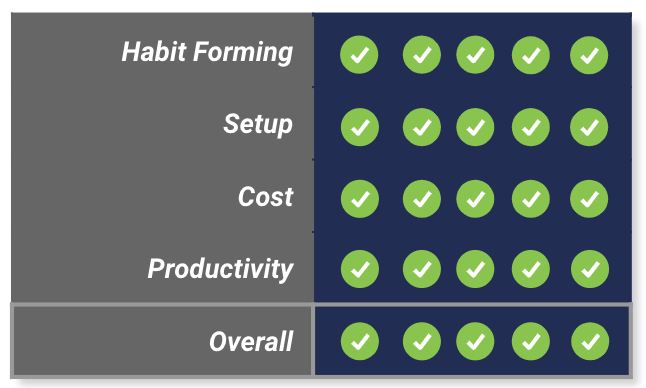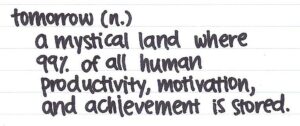Let’s face it, the days of clearly defined roles & responsibilities are over. Very few jobs on the career ladder are single-minded in their approach and even the most varied of job still comes with surprises. The reason? Business is constantly evolving in order to get ahead of often just to remain in place.
At SimilarWeb, there’s a constant flurry of side projects to help move the company forward. These present amazing learning & career opportunities for those tasked with leading them (often not managers) but also come with a problem – ownership can be a nightmare!
Remember the dreaded group projects at university? Where you’re put in a team of 5 and typically 2 people do all the work, 2 people pretend to work and 1 person literally doesn’t show up – yet credit is evenly split? Yep, that’s what you want to avoid! Also if you don’t remember that being the dynamic, you were almost certainly one of the 2 people that pretended to work 🙂
Say hello to the RACI structure

They key to this beautiful management structure is:
- R → Responsible: Who is the one responsible for actually doing the task?
- A → Accountable: Who holds the ultimate accountability for the task?
- C → Consulted: Who should the person Responsible for the task consult about the task?
- I → Informed: Who should be simply Informed about the task?
So now looking at that grid, we can see that in our fictional scenario where I have an actual team of people on this blog… I’m both responsible and accountable for writing blogs and for the first couple I have to consult my editor and inform my SEO guru. I was also responsible for ignoring the instructions from my SEO tool and therefore I get to be accountable for wondering why nobody visits the blog!
Ignoring this really quite terrible fake scenario – you can see how taking a complex side project being worked on by people of multiple levels across multiple teams, this structure can quickly become amazing! It’s such a powerful tool for any for of project that it can also be used in matrix style management structures (dotted lines and completely flat structures) to keep R&R clearly defined.
I score this productivity hack as:

If you want to avoid confusion on multi-stakeholder tasks then this is the tool for you! It’s instantly clear who does what so Habit Forming is a clear perfect score. Setup is simple enough and they get easier to make the more you do. It’s completely free and it sets everybody up for maximum productivity! This framework becomes the second system to hit the magical 5/5 score (the first was the email system that changed my life!).
H/T to Aaron Friedman and his blog Digital Highrise for suggesting I wrote this post.



